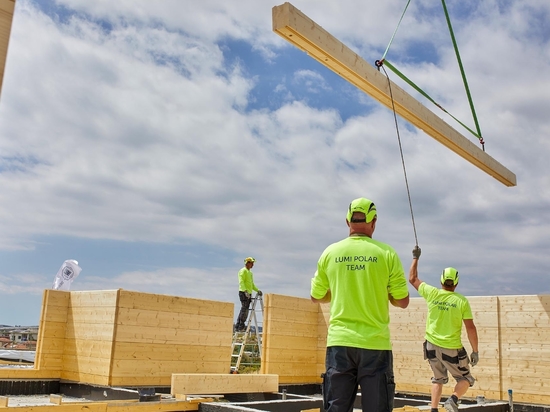
#Industry News
Foundation according to Finnish standards
The Finns have high requirements to foundations, which are justified by experience, proven by time and shown in Finnish design and production standards.
And they should not be abandoned or neglected. Since it is on the foundation that all structures are laid. Therefore, any even the most insignificant deviations from the standards or errors made during its installation, firstly, will be impossible to fix later, and secondly, over time lead to major repairs.
Before starting to design a house, the Finns carefully select the plot, with the help of an experienced architect who will evaluate not only the costs of preparing for construction, the convenience of the location of all buildings, but also the quality of the land itself. Indeed, before the foundation is laid, it is important to know the bearing capacity of the soil, the groundwater, the content of radon (natural radioactive gas), the shape of the relief, the state of surface water, etc.
By the way, the soil is rarely ready for use as a building base, and it has to be changed according to the task. For example, groundwater may be close to the surface, which is unacceptable for the foundation, so the plot must be drained. It is better not to choose a plot with a lot of water, a swamp and a lowland, otherwise you may face big expenses for backfilling it or an expensive pile field for building a house.
In cases where the soil is rich in radon, the consequences can be the most serious, up to the cancer desease. But even this can be avoided if you get the right information in time and choose the right solution for the foundation, which will practically exclude the ingress of radon into the air inside the building. There are many issues, so the Finns are very scrupulous about choosing a place for their future house and trust the solution of this issue only to specialists.
The type of soil depends on what kind of foundation will be made. And here it is important to know the calculated data on subsidence and the depth of freezing.
For example, small houses built on gravel and sandy (coarse-grained) soils practically do not subside. In this case, the most economical way to build a private house is to use a strip foundation.
If we talk about fine-grained (clay, silt) soils, then they compress when the load on them increases. The expected settlement (which can last for decades) must be taken into account when designing the foundation. The type of foundation and how to lay it will depend on the construction basis of the building.
It is also important to take into account the height of the object, as it affects the decisions on the foundation, the cost of excavation, backfilling, as well as the appearance of the building and the yard as a whole. When determining the height of the house, it is necessary to take into account: the height differences of the construction site, the height of roads or streets, the drainage of the yard, etc.
When the conditions for laying the foundation are determined, all the details are taken into account and conclusions are made, then they proceed to the choice of the type of foundation. To design and carry out structural calculations is always the task of an expert, a designer of construction. Each type of foundation has its own characteristics, and for one type - elevation differences on the site - are acceptable, for the other – are not acceptable. In each case, it is important to correctly determine which type of foundation will be the best. The slightest mistake in the design and construction of the foundation can lead to the movement of the foundation or soil when loading conditions change (winter / summer), which can lead to damage to the frame of the house.
Of course, this topic is extensive, and the Finns pay special attention to it. After all, the whole house stands on the foundation, and EVERYTHING depends on the fact how correctly it is designed and laid. Up to the health of you and your children. It is not possible to fit all the knowledge and many years of experience of the Finns in one article. We started from the very basics that everyone who plans to build a house should know and understand.
If you liked the information and was useful, we will be glad to receive feedback on Lumi Polar social networks and continue to share valuable knowledge.







